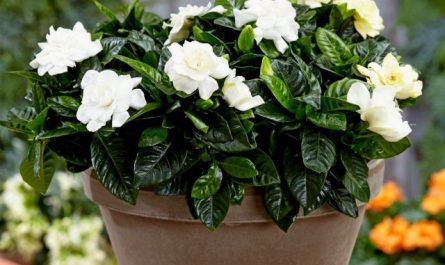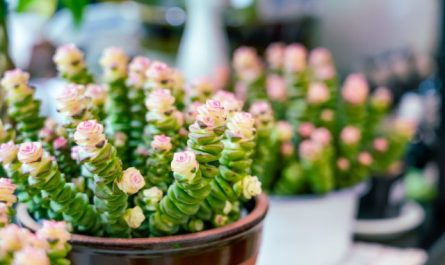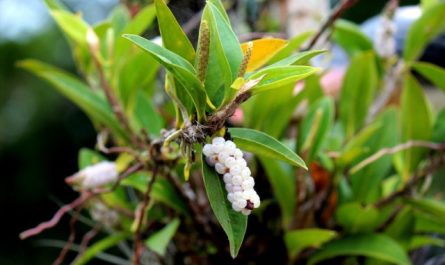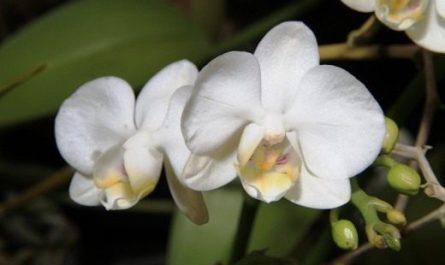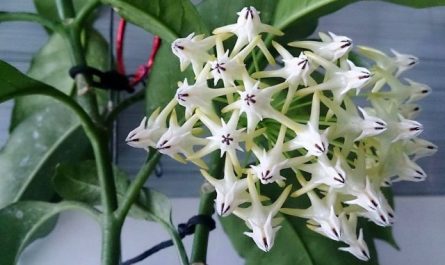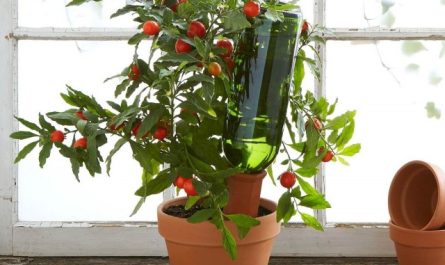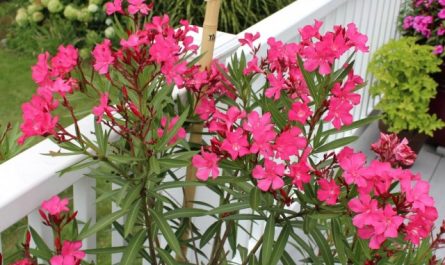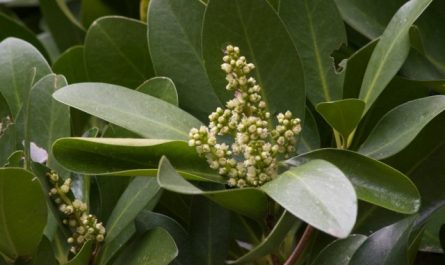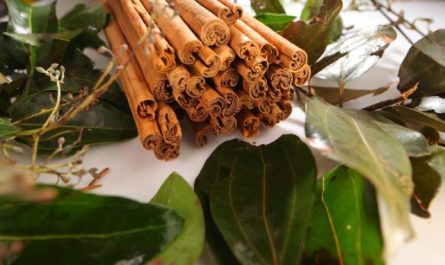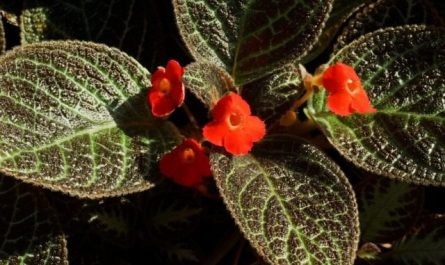Among indoor succulents, there are many plants with both a classic appearance and those flaunting their unusual details. One of the most popular representatives of the Crassulaceae family, aeonium, is rightfully considered a plant that is not only hardy and long-lived (as its name suggests), but also extremely spectacular. Juicy leaves, collected in rosettes similar to flowers, most often rise on bare shoots, creating the feeling of exotic trees in miniature. And although aeoniums are not so easy to grow, they can become real stars of large indoor collections, and decorate table setting or a work corner.

Juicy green rosettes of aeonium flowers
The appearance of aeoniums reminds many gardeners of a garden star among succulents – the amazing “stone rose” rejuvenated. Aeonium really does form rosettes of leaves, also similar to rose or dahlia flowers. But these plants are completely different in character and can boast much greater diversity in height, growth form, and leaf color. Among aeoniums, there are both the most modest and unremarkable indoor succulents, the beauty of which can only be appreciated up close, and imposing exotics, in which it is not so easy to recognize the decorative foliage culture from the Crassulaceae family.
Eonium (Aeonium) is a large genus of succulents that develop as compact shrubs or herbaceous plants. These are truly long-lived plants that can be brought into the interior of rooms for decades. Like all succulents, aeonium is characterized by fleshy, water-accumulating leaves and shoots. The stems are strong, straight, branching or growing one by one, gradually becoming woody and showing off marks from fallen old leaves that resemble scars. Some species of aeonium develop spectacular aerial roots.
The height of these plants varies from a modest 10-15 cm to almost 1 m. At the same time, the stems of different species can be either clearly expressed, resembling woody plants, or almost completely hidden under squat rosettes of leaves. Fleshy leaves are always sessile, narrowing towards the base, resembling petals or diamonds in shape. Rare pubescence or an absolutely glossy surface are combined with edges decorated with thin white eyelashes or small teeth.
The leaves are collected in very dense, flower-like rosettes, arranged in them in a tiled, patterned manner. The rosettes vary in diameter from a few centimeters to almost 1 m, but are always located at the ends of the stems.
The color of the leaves varies from the usual light green to various reddish, brown, purple shades, most often unevenly distributed over the leaf blade. Indoors, aeonium blooms very rarely. Pyramidal brushes of bright yellow inflorescences are very effective and last a long time. But the lack of flowering has its own advantage. Species that form a single rosette of leaves most often die after flowering.

The best types of indoor aeoniums are rightfully considered to be:
- Aeonium nobilis (Pozsgasok fine) is a spectacular indoor succulent with very juicy olive leaves that curve at the edge and form flower-like rosettes up to half a meter in diameter.
- Aeonium burchardii (Aeonium x burchardii) is a small but very effective hybrid species with a rather dark, beautiful stem and rosettes of leaves up to 10 cm in diameter, with a pointed tip and brownish-orange edge that turns into a bright green color at the base of the leaf.
- Aeonium ornamental (Aeonium decorum) is one of the most spectacular branching species of aeonium, developing in the form of a surprisingly delicate, loose bush, the rosettes of leaves of which rise to a height of up to 50 cm. Rough shoots with diamond-shaped scars and densely located whitish growths are crowned with elegant, graceful rosettes similar to miniature roses. Green-pinkish smooth leaves up to 3 mm long look like young rose leaves due to small sharp teeth along the edge.
- Aeonium canariensis (canarian aeonium) seems to consist of rosettes only. The stems of this succulent are practically invisible, the rosette of leaves, especially in young plants, practically lies on the ground. The leaves are unusually large, with an original bend of leaf blades, an unusual color, seemingly brown-green. Gradually, the rosette of leaves becomes loose, in diameter it can reach about half a meter.
- Aeonium virginiana (Aeonium canariense var. virgineum) is a charming succulent, the most attractive part of which is the thick eyelashes along the edge of the leaf blades. It forms almost flat, very beautiful rosettes of rounded leaves. It produces many leaves, which together form a kind of pillows of numerous green flowers. The velvet-like edging, rich green color and light aroma that comes from the greenery only add charm to this amazing succulent.
- Aeonium domesticum (Aeonium domesticum, today reclassified as a hybrid Aichryson domestica (Aichryson x domesticum)) also branches quite strongly, but is limited to a height of only 30 cm. It boasts almost spreading branches, bending only at the top, and darker leaves of an inversely ovoid shape with a rounded edge. The rosettes of leaves of this aeonium resemble the inflorescence of zinnia.
- Aeonium undulatum (Aeonium undulatum) is a spectacular, but somewhat unusual and very powerful plant with a thick silvery stem covered with scars and large rosettes of leaves up to 30 cm in diameter, resembling a half-open bud, located at the top of the shoots. The leaves of this species are rounded, strongly narrowed at the base, tightly seated, with a bright color.
- Aeonium arborescens (Aeonium arboreum) is a spectacular semi-shrub with practically non-branching shoots, woody only at the base, dense rosettes of leaves of which are located at the tops of shoots, colored mainly in brown with rare splashes of light green. Rosettes of leaves reach 20 cm in diameter, spatulate in shape, due to different angles of bending they seem more lush.
- Aeonium aureum (Aeonium arboretum var. holochrysum) forms original bushes with straight shoots, slightly hanging only at the ends, and narrow spatulate, very thick leaves, with a purple stripe along the edge of the leaf and in the very center. The yellow-green color in combination with colored stripes looks very variegated. The rosettes of leaves reach 20 cm in diameter.
- Aeonium lindleyi (Aeonium lindleyi) is a compact, only 30 cm high, but strongly branching shrub with very thin curved brown shoots, crowned with dense small rosettes of dark green color. Slightly pubescent leaves with a round edge resemble the foliage of sedum. The foliage of this species is sticky and quite aromatic.
- Aeonium stratum (Aeonium Tabulare) is one of the most low-growing species, forming a sitting, almost flat, saucer-shaped rosette of sitting, imbricated leaves, creating a kind of green “cobblestone” up to 50 cm in diameter. The stem is very shortened, almost invisible. The leaves, narrow at the base, turn into an expanded spatulate upper edge with beautiful whitish eyelashes. It stands out for its ideal symmetry and stunningly beautiful imbricated patterns.
- Aeonium Haworthia (Aeonium haworthii) is a spectacular branching “tree” with unusual, widely spaced thin stems and massive aerial roots that seem to support the arched, curved shoots. At the tops of the stems are dense rosettes resembling green flowers with gray-green leaves decorated with a reddish stripe along the edge.
Almost all aeoniums are represented not only by species plants, but also by decorative varietal forms. Particularly popular are all varieties of Variegatum and the so-called “black” varieties.



Caring for aeonium at home
Growing aeonium is very easy. This is a light-loving and moisture-sensitive succulent plant, which, despite its natural preference for cool wintering, tolerates even room temperatures. Caring for aeonium is not at all difficult, this plant is suitable even for beginner gardeners. Compact and amazingly beautiful in detail, they require attention only for one parameter – aeoniums are intended to be admired. These are unique accents that deserve a special place in the interior.
Lighting for aeonium
All aeoniums without exception are sun-loving plants, which even in winter require the selection of the most brightly lit locations. In varietal plants, as well as species with variegated leaf color, any shading causes a complete loss of the characteristic color. Moreover, even in light partial shade, the stems of any aeonium become much thinner, stretch out, bend, and the plants form small and not so spectacular rosettes.
For this indoor succulent, it is advisable to select only southern locations on windowsills. Windows facing strictly south or southeast are considered optimal. At the same time, during the hottest period in summer, when the plants are in temperatures that are outside the optimal range, it is better to protect the fleshy leaves of this succulent from sunlight.
Aeonium needs to be placed in the brightest places in the room anyway, so increasing the lighting for it in winter is simply impossible. This succulent does not like artificial lighting in any form.



Comfortable temperature conditions
Despite its love for the brightest possible lighting, aeonium cannot be classified as a heat-loving plant. This crop looks most impressive only when optimal conditions are maintained, alternating different maintenance regimes during the active growth phase and during the dormant period. Aeonium feels great at an air temperature of 20 to 25 degrees during the spring and summer. Lower temperatures can be harmful to the plant, but higher temperatures can increase sensitivity to direct sunlight and the dependence of plants on fresh air.
In winter, all species of aeonium, without exception, prefer coolness, maintenance in the temperature range from 10 to 12 degrees. But at the same time, there is no need to be afraid of ordinary room conditions. Unlike many other plants, aeonium adapts well to ordinary room parameters even during the winter. The plant will simply form fewer rosettes, and their diameter will decrease slightly.
Aeonium can be safely classified as an indoor plant that loves fresh air. In summer, it feels great in the fresh air, in the garden or on the balcony. At the same time, the obligatory removal affects the beauty and attractiveness of both the rosettes of leaves and the color of the leaf blades. Aeonium can be kept in the open air all summer. It is taken out as soon as the night temperatures rise above 10 degrees Celsius and left until the first cold weather arrives. The rest of the year, the plant needs to be provided with as frequent ventilation as possible.



Watering and air humidity
Like all succulents, aeoniums require fairly moderate watering. Between procedures, the soil should dry out almost completely. Thanks to less frequent watering, even very busy gardeners can grow the plant. In winter, procedures should be very rare, just not allowing the substrate to dry out completely (but the humidity is significantly reduced compared to the period of active development).
The most difficult thing about watering this succulent is the need to carry out the procedure very carefully. Water should not get on the base of the rosette and stem, drops should never accumulate in the center of the bush. Wetting of the stems for aeonium is the most common cause of the spread of various rots and fungal infections. Therefore, watering for this plant must be carried out strictly along the edge of the pot.
But aeonium does not need increased air humidity at all. They tolerate even the driest air and heating systems perfectly, and do not even need rare spraying, including during the hottest periods in summer. In fact, all humidification procedures come down to regularly removing accumulated dust.



Fertilizers for aeonium
This succulent needs fertilizers only during the period of active growth from spring to summer. At the same time, fertilizing for aeoniums is carried out even less often than for cacti. For this plant, one procedure every 2-3 weeks is enough.
The best fertilizers for aeonium are mixtures of fertilizers for cacti or other succulents.
Pruning Aeoniums
If necessary, aeonium tolerates formative non-cardinal pruning well. Plants need it only if the shoots are excessively thin, stretch out, and the plants lose their decorative qualities. In early spring, at the first signs of growth, excessively grown, curved shoots are cut off and used for rooting. On the remaining stumps, aeoniums usually form a large number of young rosettes.

Transplanting aeoniums and substrate
Like all succulents, aeoniums need a permeable, very light and loose substrate. The optimal soil mixtures for it are considered to be those consisting of equal parts of leaf and turf soil, coarse sand and peat. A ready-made substrate intended for cacti is also suitable for this plant according to its characteristics. Adding charcoal to the soil helps prevent most aeonium diseases.
Transplanting plants will also not cause trouble for gardeners. Only young plants are transplanted annually, but adults need to replace the container and substrate only once every 1-2 years. Plants can be either transferred or partially removed from the substrate. But since aeoniums are extremely sensitive to root rot, a high drainage layer with a minimum height of 3-7 cm is required for them. It is advisable to keep the depth level the same.
Diseases and pests of aeoniums
Aeoniums cannot boast of enviable resistance to pests and diseases. They are especially loved by mealybugs, which settle in dense rosettes between the leaves. It is very easy to notice damage by pests, because of them, growth immediately stops, the attractive appearance of the rosettes gradually changes to neglected. It is better to fight any pests by mechanical washing with a soap solution. Insecticides for this crop are used only as a last resort.
Various fungal diseases are also very common on aeoniums. But they only occur in plants when care is not taken properly, in particular, when watering is careless, during which the base of the bush or rosettes gets wet.
Common growing problems:
- elongation of shoots, curvature of the plant and loss of attractive appearance when there is insufficient light;
- the appearance of yellow and brown spots when over-watered;
- the appearance of dark zones on leaves in the shade;
- depressed appearance, loss of color due to lack of access to fresh air.

Reproduction of Aeoniums
These succulents are very easy to propagate. Aeoniums can be propagated both by seed and by rooting apical cuttings.
The plant seeds are very small, they are simply scattered on the surface without covering with a substrate and after light spraying with a sprayer, they are covered with film or glass. If the air temperature exceeds 20 degrees Celsius, they germinate very quickly and produce friendly shoots. Growing the plant requires a gradual change of individual containers.
Cuttings are an even simpler method. For rooting, aeonium uses stems with rosettes of leaves at the top. The shoots are cut with a sharp knife at an angle of 45 degrees, immediately treating the cut surface with crushed charcoal and letting it dry for 2-3 days. Then the cuttings with rosettes of leaves are planted in a pot with a mixture of leaf soil and sand or in clean sand, deepening by 2-3 cm. With moderate watering and slight substrate moisture, the plants form roots even without greenhouse conditions, but they must be kept in diffused light.

